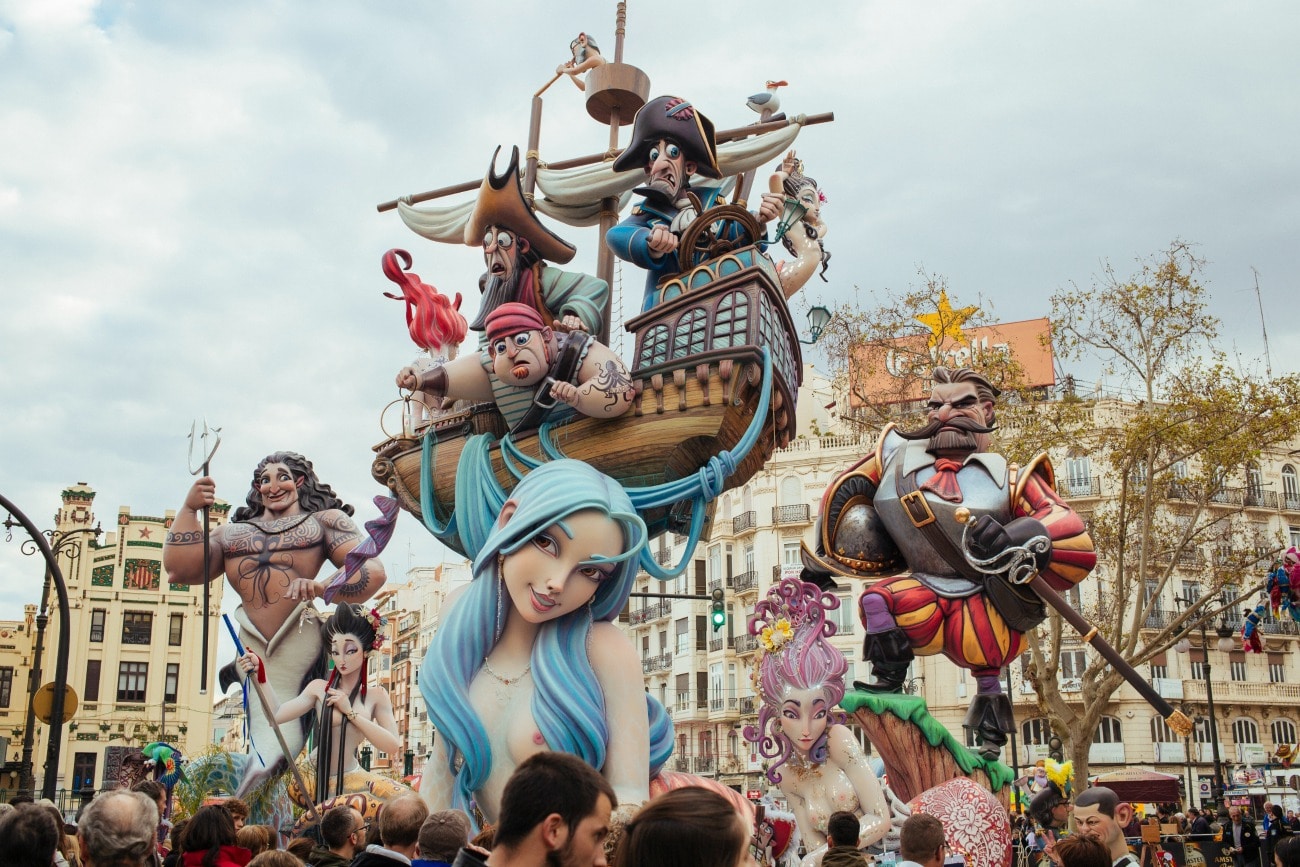Every year from March 1-19, Valencia goes boom! The streets of Spain’s third-largest city erupt with fireworks, cultural celebrations and artistry honored on UNESCO’s Intangible Cultural Heritage List.
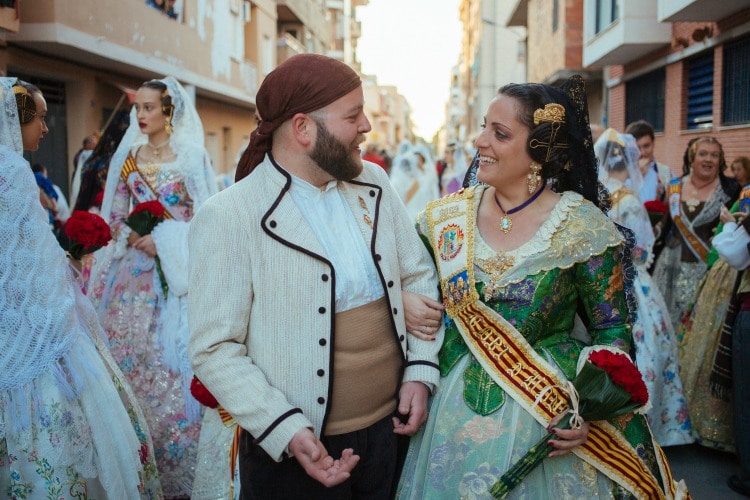
What is the Las Fallas Festival?
For starters, it’s the biggest party of the year, attracting more visitors to Valencia than any other event. It’s part pyrotechnics, part art installation and an all-out celebration of Valencian regional culture.
The origin dates back hundreds of years. To celebrate spring, carpenters would burn wooden pieces that had been used to prop up lights during winter. Over time, they added old belongings and rags to the fire, which reportedly gave the fires the appearance of a human form. Today, Las Fallas Festival still honors St. Joseph, the patron saint of carpenters.
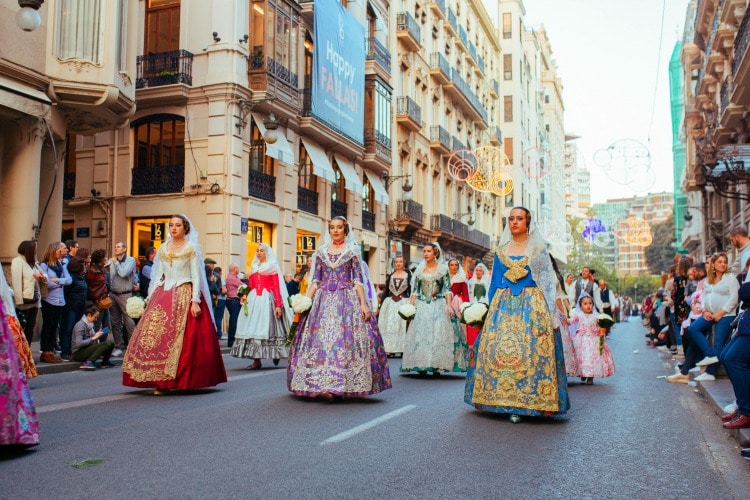
Starting March 1, the city erupts into a concert of gunpowder known as mascletàs every day at 2 pm. Head to Plaza del Ayuntamiento and prepare for a cacophony of sound that reaches 120 decibels. You will be awe-struck—and that is medically indicated! It’s actually recommended that visitors keep their mouths open during the loud explosions to avoid damaging their ears.
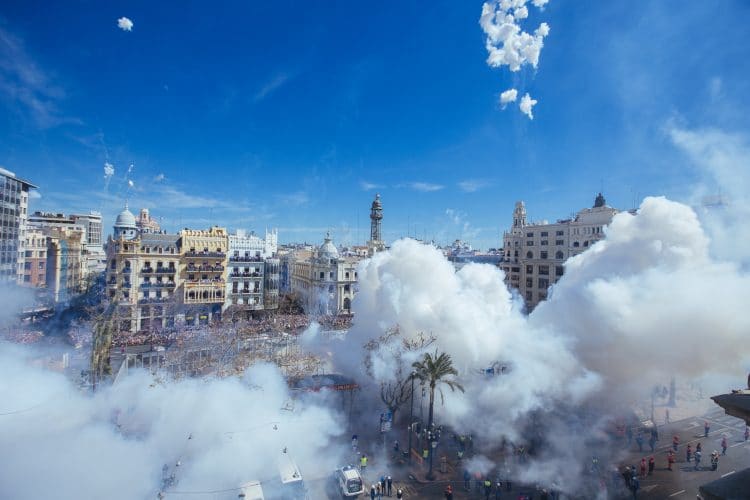
Partying, Parades and Artistry
On March 15, artistry and craft take center stage. Valencia proudly begins presenting more than 750 fallas: gigantic, papier-mâché sculptures satirizing politicians, celebrities and local customs. These larger-than-life figures built by highly skilled artisans take months to complete, with some price tags reaching a million euros.
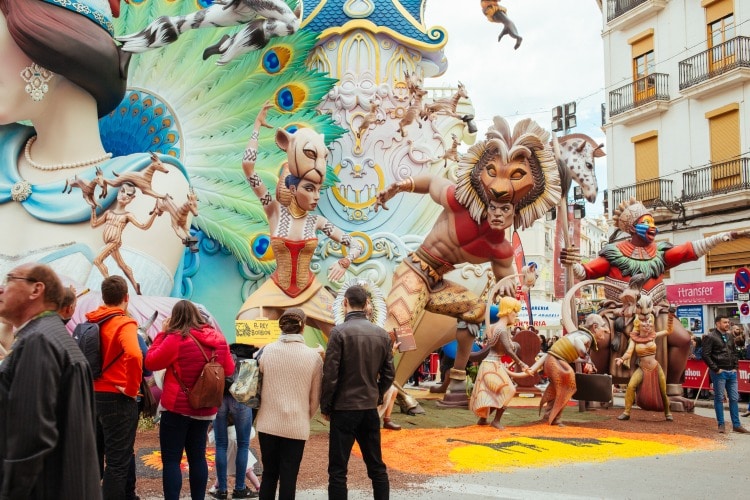
The partying, parades, displays of traditional Valencian costumes and—of course—fireworks, climax at midnight on March 19, with the public burning of all the papier-mâché fallas stationed throughout the city. That’s right, this city-wide art installation is fleeting but makes quite the bonfire!
Only one small ninot chosen by popular vote is spared (a life-sized figure sitting at the base of one of the building-sized fallas). This solitary sculpture will then join other ninots, dating as far back as 1934, at the Museum of Las Fallas, where visitors can enjoy them throughout the year.
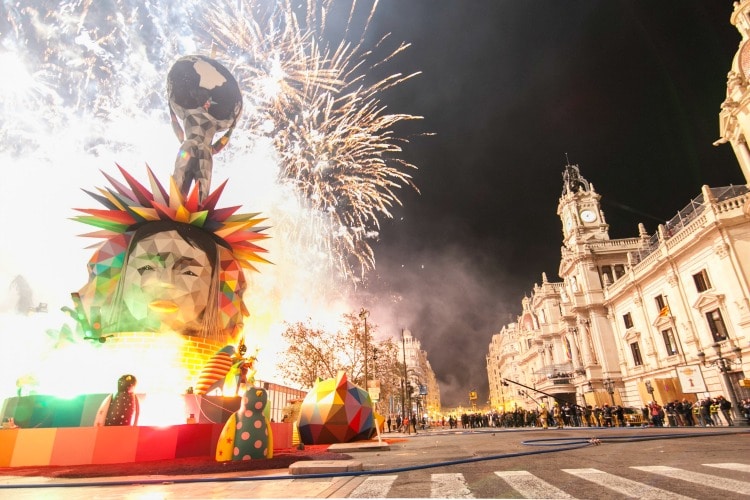
Visit the Valencia Tourism website for a full list of Las Fallas Festival events.

